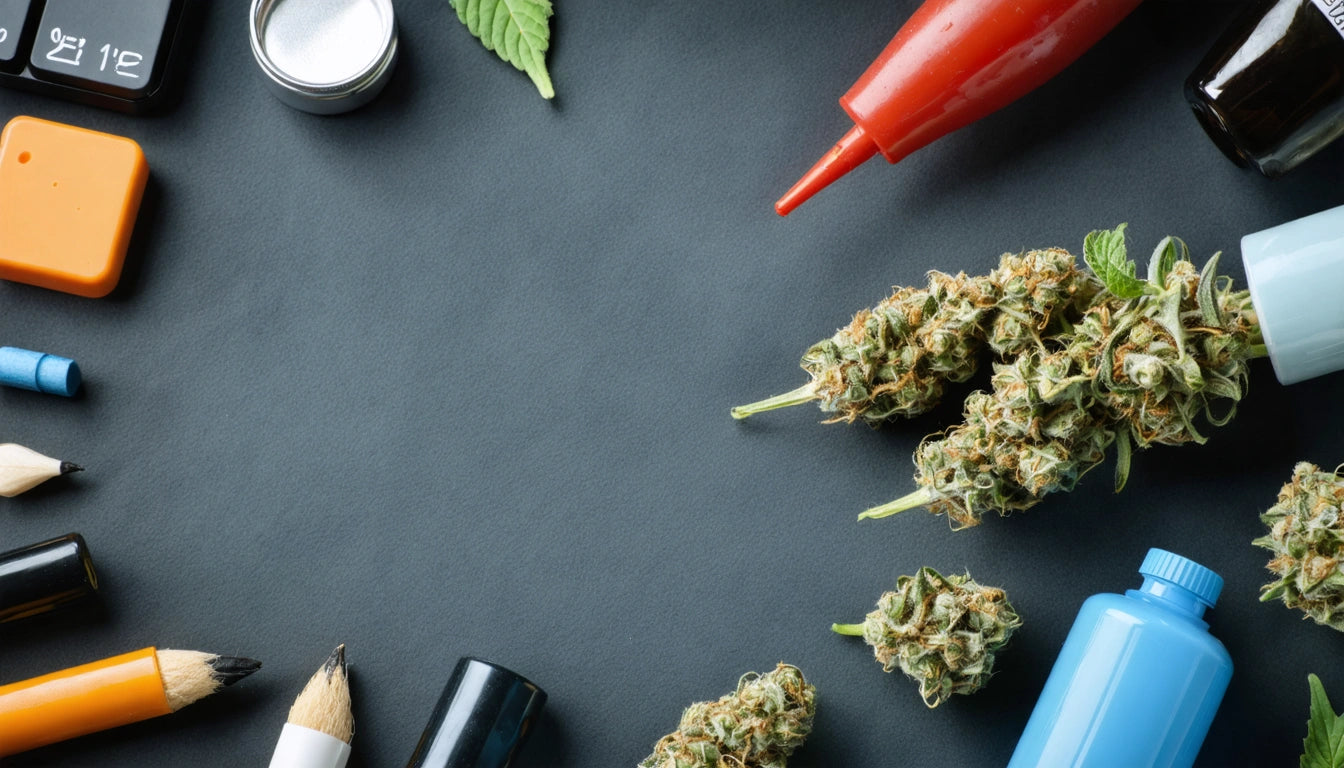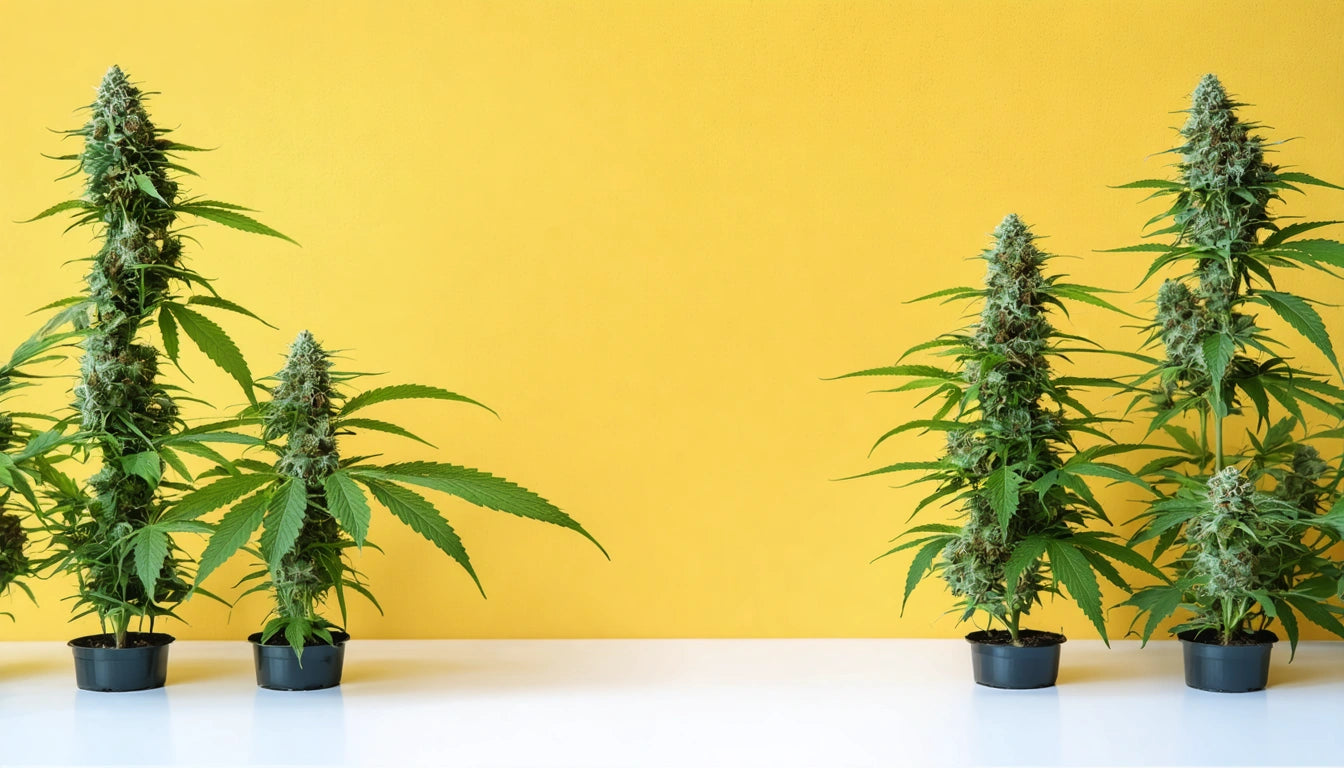Table of Contents
- Cannabinoid Basics: Understanding the Cannabis Compounds
- THCA vs CBD: Key Differences in Structure and Effects
- THCV Properties and Comparison with CBD
- CBG vs THCV: The Mother Cannabinoid and the Appetite Suppressor
- CBDV vs CBD: Lesser-Known Cannabinoid Comparisons
- Practical Applications: How to Choose the Right Cannabinoid
- Preservation and Potency: Maintaining Cannabinoid Integrity
- Future Cannabinoid Research and Market Development
Comparing Cannabinoids: Understanding the Differences Between THCA, CBD, THCV, CBG, and CBDV
The cannabis plant contains over 100 different cannabinoids, each with unique properties and potential effects on the human body. As cannabis research advances, consumers and industry professionals alike are becoming increasingly interested in understanding the distinctions between these compounds. This guide explores the key differences between five major cannabinoids: THCA, CBD, THCV, CBG, and CBDV.
Cannabinoid Basics: Understanding the Cannabis Compounds
Cannabinoids are chemical compounds that interact with the endocannabinoid system in the human body. This system plays a role in regulating various physiological processes including pain sensation, mood, appetite, and memory. While THC and CBD are the most well-known cannabinoids, others like THCA, THCV, CBG, and CBDV are gaining attention for their unique properties.
Each cannabinoid has a distinct molecular structure that determines how it interacts with the body's cannabinoid receptors (CB1 and CB2). These structural differences result in varying effects, from psychoactivity to potential therapeutic benefits.
THCA vs CBD: Key Differences in Structure and Effects
When comparing THCA vs CBD, the most fundamental difference lies in their relationship to psychoactivity. THCA (tetrahydrocannabinolic acid) is the non-psychoactive precursor to THC found in raw cannabis plants. When cannabis is heated through smoking, vaping, or cooking, THCA converts to THC through a process called decarboxylation, becoming psychoactive.
CBD (cannabidiol), on the other hand, remains non-psychoactive regardless of heating. As explored in this article debunking CBD myths, CBD does not produce a high but may offer various therapeutic benefits.
Key Differences Between THCA and CBD:
- Psychoactivity: THCA is non-psychoactive but converts to psychoactive THC when heated; CBD remains non-psychoactive
- Receptor Binding: THCA has limited binding to cannabinoid receptors; CBD has complex interactions with multiple receptor systems
- Legal Status: CBD derived from hemp is federally legal; THCA exists in a legal gray area as it can become THC
- Potential Benefits: Both show promise for inflammation and pain, but through different mechanisms
For a deeper understanding of how THCA differs from THC and other cannabinoids, you can reference this comprehensive comparison.
THCV Properties and Comparison with CBD
THCV (tetrahydrocannabivarin) shares a similar structure with THC but produces notably different effects. When examining THCV vs CBD, several important distinctions emerge.
THCV may produce mild psychoactive effects at high doses, though less intense than THC. It's gained attention for its potential to suppress appetite, unlike THC which often stimulates hunger. This property has sparked interest in THCV for weight management applications.
CBD, by contrast, has no appetite-suppressing effects and works through different pathways in the endocannabinoid system. While CBD has been extensively studied for anxiety relief, THCV research is still developing but shows promise for metabolic disorders.
Highlight: When comparing THCV vs CBD, remember that THCV may have mild psychoactivity at high doses and potential appetite-suppressing properties, while CBD remains non-psychoactive with a broader range of studied applications.
CBG vs THCV: The Mother Cannabinoid and the Appetite Suppressor
CBG (cannabigerol) is often called the "mother cannabinoid" because it's the precursor from which other cannabinoids develop in the plant. When comparing CBG vs THCV, we find two compounds with distinct properties and potential applications.
CBG is non-psychoactive and interacts with both CB1 and CB2 receptors. Research suggests it may have anti-inflammatory, antibacterial, and neuroprotective properties. For more information on CBG's relationship with other cannabinoids, see this comparison of CBG, CBN, and CBGA.
THCV, as mentioned earlier, has potential appetite-suppressing effects and may influence energy metabolism. Unlike CBG, THCV can be mildly psychoactive at high doses.
Key Differences Between CBG and THCV:
- Origin: CBG is a precursor cannabinoid; THCV forms through a different biosynthetic pathway
- Psychoactivity: CBG is non-psychoactive; THCV may be mildly psychoactive at high doses
- Receptor Interaction: CBG interacts with both CB1 and CB2 receptors; THCV primarily affects CB1 receptors
- Potential Applications: CBG shows promise for inflammation and bacterial infections; THCV is being studied for metabolism and weight management
CBDV vs CBD: Lesser-Known Cannabinoid Comparisons
CBDV (cannabidivarin) is structurally similar to CBD but has received less research attention. When comparing CBDV vs CBD, both are non-psychoactive cannabinoids that share some properties while differing in others.
CBDV has shown particular promise in preliminary studies for neurological conditions, especially those involving seizures. CBD has been more extensively researched and has an FDA-approved medication (Epidiolex) for certain seizure disorders.
Both compounds interact with the endocannabinoid system without binding directly to the main cannabinoid receptors. For more insights into how CBD interacts with the body, you can explore this guide on CBD uses and interactions.
Practical Applications: How to Choose the Right Cannabinoid
With an understanding of the differences between these cannabinoids, consumers can make more informed choices about which products might best suit their needs:
- For non-psychoactive anti-inflammatory effects: Consider CBD or CBG products
- For potential appetite control: THCV-rich strains or extracts may be worth exploring
- For the benefits of THC without psychoactivity: THCA in raw cannabis (unheated) products
- For entourage effects: Products with balanced cannabinoid profiles like those discussed in this article on CBD and THC ratios
When selecting products, look for comprehensive lab testing that verifies cannabinoid content. The legal status of these compounds varies by location and source (hemp vs. marijuana), so research local regulations before purchasing.
Preservation and Potency: Maintaining Cannabinoid Integrity
Cannabinoids can degrade over time due to exposure to heat, light, and oxygen. This is particularly important for THCA, which converts to THC with heat, and for preserving the unique properties of minor cannabinoids like THCV, CBG, and CBDV.
To maintain cannabinoid potency and prevent degradation, proper storage is essential. Using humidity control solutions for cannabis storage can help maintain optimal conditions for preserving these delicate compounds, especially for flower products containing a full spectrum of cannabinoids.
Temperature control is equally important, with refrigeration sometimes recommended for concentrates rich in minor cannabinoids. UV-resistant packaging can also prevent light degradation, which can alter cannabinoid profiles over time.
Future Cannabinoid Research and Market Development
As cannabis research expands, our understanding of minor cannabinoids continues to evolve. The distinctions between THCA vs CBD, THCV vs CBG, and CBDV vs CBD will likely become clearer as more clinical studies are conducted.
The cannabis market is already responding to increased consumer interest in specific cannabinoids, with products highlighting CBG, THCV, and others alongside the more familiar CBD and THC. This trend toward cannabinoid-specific products represents an important shift in how consumers approach cannabis, moving from strain-based selection to cannabinoid profile-based choices.
For industry professionals, staying informed about emerging research on these cannabinoids will be crucial for product development and consumer education. As we learn more about the unique properties of each compound, more targeted and effective cannabis products will continue to emerge in the marketplace.











Leave a comment
All comments are moderated before being published.
This site is protected by hCaptcha and the hCaptcha Privacy Policy and Terms of Service apply.